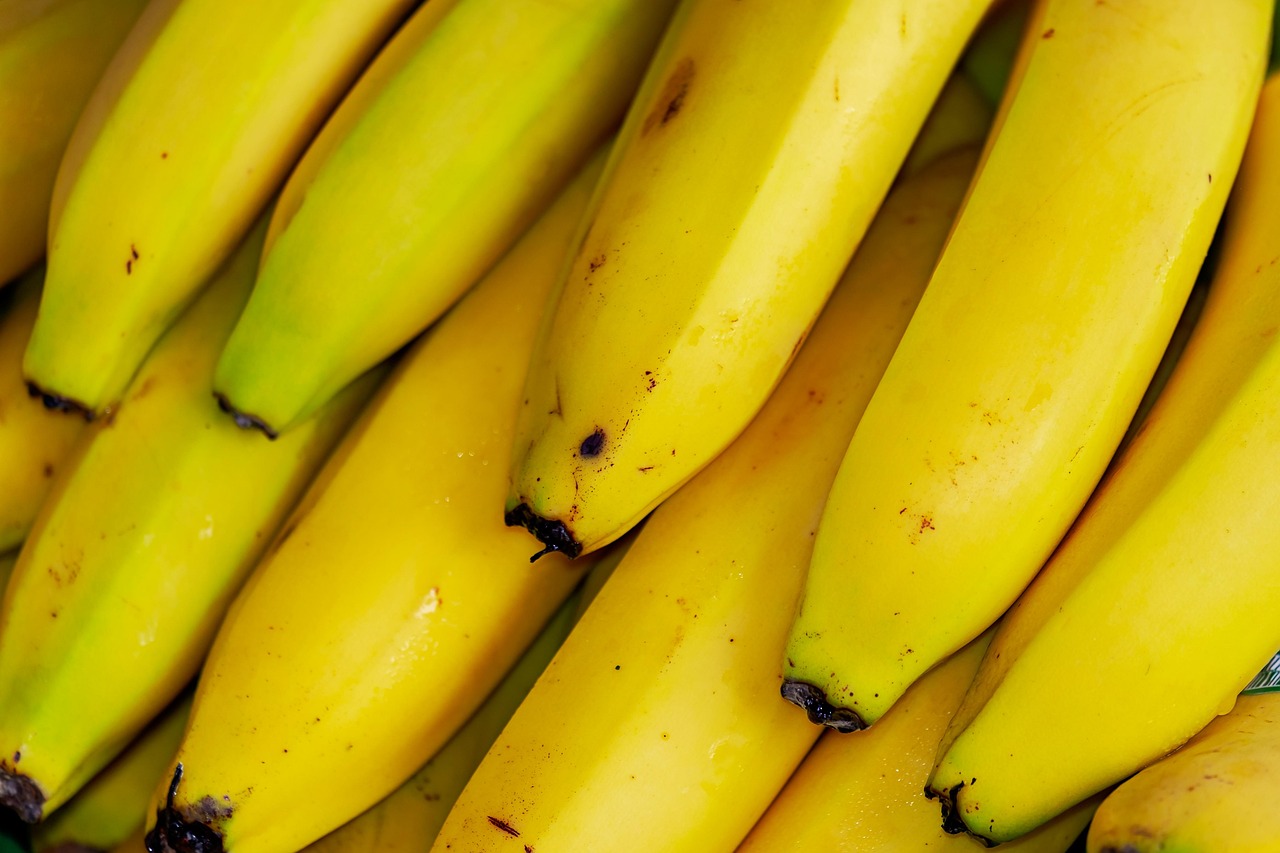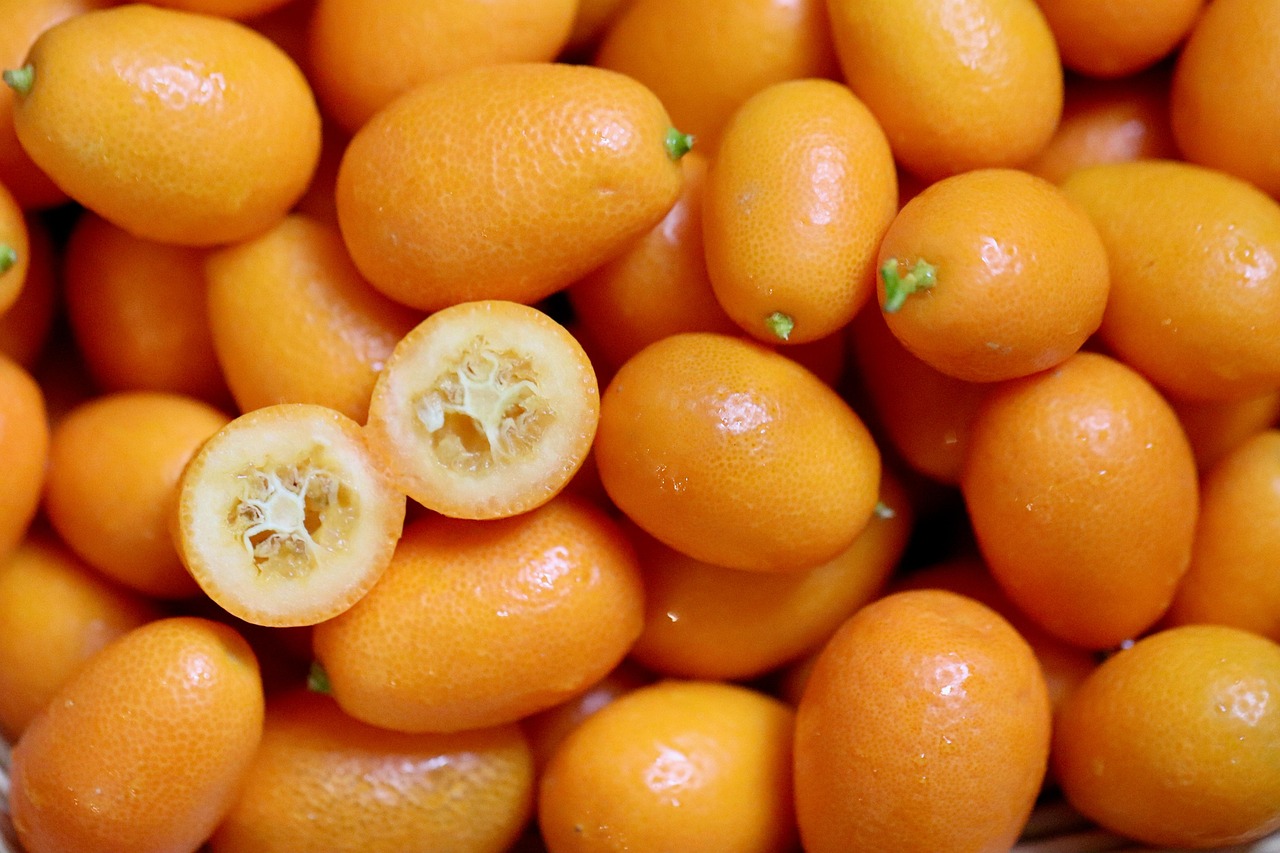Summer pruning for tropical fruit trees is essential for promoting healthy growth, enhancing fruit quality, and improving air circulation. It involves trimming branches during the growing season to shape the tree and remove any dead or overcrowded sections.
Tropical fruit trees, including mangoes, papayas, and guavas, thrive in warm climates and benefit significantly from regular pruning. Unlike temperate trees, which are typically pruned in late winter or early spring, tropical fruit trees require a different approach due to their unique growing patterns. Summer pruning helps manage tree size and encourages better fruit production. It also aids in disease prevention by improving light penetration and airflow within the canopy.

Understanding the right techniques and timing for summer pruning is crucial. Each type of tropical tree has its specific requirements, but some general practices can be applied across the board. Proper tools are also essential for effective pruning, ensuring clean cuts that promote healing and reduce the risk of disease.
Importance of Summer Pruning
Summer pruning is not just about aesthetics; it plays a vital role in the overall health of tropical fruit trees. Here are some key benefits:
- Improved Air Circulation: By removing excess foliage, summer pruning allows for better airflow through the tree. This helps reduce humidity levels and minimizes the risk of fungal infections.
- Increased Light Exposure: Pruning opens up the canopy, letting sunlight reach more leaves. This promotes photosynthesis and enhances fruit quality.
- Control of Tree Size: Regular pruning helps maintain a manageable size for tropical fruit trees. This makes harvesting easier and reduces the risk of breakage during storms.
- Enhanced Fruit Quality: Properly pruned trees tend to produce larger and more flavorful fruits, as nutrients are directed to fewer, stronger branches.
Best Practices for Summer Pruning
When engaging in summer pruning, following best practices ensures that your tropical fruit trees remain healthy and productive. Here are some guidelines to consider:

- Choose the Right Time: Summer is the ideal time for pruning most tropical fruit trees. Late spring or early summer is often recommended, as trees are actively growing.
- Use Clean Tools: Ensure that all pruning tools are clean and sharp. This minimizes the risk of disease transmission and promotes quick healing.
- Aim for Balance: Focus on maintaining a balanced shape. Remove branches that cross each other or grow inward to prevent overcrowding.
- Limit the Amount Removed: Avoid removing more than 20-30% of a tree’s foliage in one session. Excessive pruning can stress the tree.
- Monitor Tree Health: After pruning, keep an eye on your trees for any signs of stress or disease. Early intervention can save your plants.
Tropical Fruit Trees Commonly Pruned in Summer
Several tropical fruit trees benefit significantly from summer pruning. Understanding which trees to prune can help you create a focused care plan. Below is a table listing some common tropical fruit trees and their specific pruning needs:
| Tree Type | Pruning Focus | Timing |
|---|---|---|
| Mango | Shape canopy, remove deadwood | Late spring to early summer |
| Papaya | Remove lower leaves, control height | All summer |
| Guava | Thin branches, improve light access | Late spring to early summer |
| Pineapple Guava | Shape bush, remove spent flowers | Early summer |
By tailoring your summer pruning approach to the specific needs of each tropical fruit tree, you can ensure robust growth and fruitful harvests. Each tree type may require unique techniques or timing adjustments. Observing your trees closely will provide insights into their needs and help you refine your pruning strategy over time.
Incorporating these practices into your gardening routine will not only enhance the health of your tropical fruit trees but also contribute to a more enjoyable gardening experience. The rewards of summer pruning extend beyond aesthetics, leading to vibrant trees and bountiful harvests.

Tools and Techniques for Effective Pruning
Having the right tools and techniques is crucial for successful summer pruning of tropical fruit trees. The quality of your cuts can significantly impact the health of the tree and its ability to produce fruit. Below are some essential tools and techniques to consider.
Essential Pruning Tools
Investing in high-quality pruning tools will make your summer pruning tasks easier and more effective. Here are some essential tools:
- Pruning Shears: These are ideal for small branches and stems. Look for bypass shears, which provide a clean cut.
- Loppers: For thicker branches, loppers offer increased leverage. They are useful for reaching higher areas without a ladder.
- Saws: A small hand saw or pruning saw is necessary for larger branches that cannot be cut with shears or loppers.
- Hedge Trimmers: While not always necessary, hedge trimmers can help shape and maintain smaller tropical trees or shrubs.
- Gloves: Protective gloves will protect your hands from cuts and thorny branches.
Pruning Techniques
Applying the right techniques while pruning ensures that your tropical fruit trees remain healthy and productive. Here are some techniques to follow:

- Make Clean Cuts: Always aim for a clean cut. Jagged cuts can lead to disease and pests. Use sharp tools to ensure precision.
- Cut at an Angle: When making cuts, do so at a slight angle. This helps water run off the cut surface, reducing the risk of rot.
- Remove Suckers: Suckers are shoots that grow from the base of the tree or along the trunk. Remove them to promote better energy distribution to the main branches.
- Avoid Topping: Topping, or cutting off the top of a tree, can lead to weak regrowth. Instead, focus on thinning out branches.
- Step Back Periodically: Take breaks during pruning to step back and assess the tree’s shape and overall health.
Understanding Tree Growth Patterns
To prune effectively, it’s essential to understand how tropical fruit trees grow. Unlike deciduous trees, tropical trees often have a continuous growth cycle influenced by environmental factors such as temperature, humidity, and rainfall. Here are some key growth patterns:
- Active Growth Periods: Tropical trees usually have active growth phases during warm months. This is when summer pruning is most beneficial.
- Fruit Development: After flowering, fruit development occurs rapidly. Pruning too late in the season can affect fruit yield.
- Resting Periods: Some tropical trees may experience short resting periods in cooler months. Pruning during this time is typically not recommended.
Common Mistakes to Avoid
While summer pruning can greatly benefit tropical fruit trees, there are common mistakes that gardeners should avoid. Being aware of these pitfalls can help you achieve better results.
- Over-Pruning: Removing too much foliage can stress the tree. Limit your pruning to 20-30% of the tree’s total foliage in one session.
- Ignoring Tree Health: Failing to assess the health of the tree before pruning can lead to removing critical branches or deadwood that may still support fruit production.
- Wrong Timing: Pruning at the wrong time can interfere with fruit development. Always aim to prune during active growth periods.
- Poor Technique: Using dull tools or improper cutting angles can damage branches and introduce disease. Always prioritize using sharp, clean tools.
The Role of Fertilization After Pruning
Fertilization plays a crucial role in the recovery and growth of tropical fruit trees after pruning. Providing adequate nutrients helps trees recover from stress and promotes vigorous new growth. Here are some guidelines for fertilizing after summer pruning:
- Select Appropriate Fertilizer: Choose a balanced fertilizer that contains nitrogen, phosphorus, and potassium (NPK). Organic options like compost or well-rotted manure are also beneficial.
- Avoid Excess Nitrogen: While nitrogen promotes growth, too much can lead to excessive foliage at the expense of fruit production.
- Timing of Fertilization: Fertilize immediately after pruning to give the tree a nutrient boost as it begins to recover.
- Watering: Ensure the tree is well-watered after fertilization. This helps nutrients penetrate the soil and reach the roots effectively.
By understanding tools, techniques, growth patterns, and common mistakes in summer pruning, you can enhance both your skills and your tropical fruit trees’ health. Fertilization post-pruning further supports growth, ensuring your trees not only survive but thrive in their environment.
Pest and Disease Management During Summer Pruning
Summer pruning not only encourages healthy growth in tropical fruit trees but also provides an opportunity to manage pests and diseases effectively. Recognizing potential threats and addressing them during the pruning process can lead to healthier trees and better fruit yields.
Common Pests Affecting Tropical Fruit Trees
Tropical fruit trees can be susceptible to various pests that may affect their health and productivity. Here are some common pests to watch for:
- Fruit Flies: These pests lay eggs in ripening fruit, causing it to rot. They are often attracted to overripe or damaged fruits.
- Aphids: Small insects that suck sap from new growth, leading to stunted growth and the potential spread of diseases.
- Spider Mites: Tiny pests that can cause leaf discoloration and webbing. They thrive in hot, dry conditions.
- Scale Insects: These pests attach themselves to stems and leaves, sucking sap and weakening the tree.
- Mealybugs: Similar to scale insects, mealybugs feed on plant sap and can produce a sticky residue that attracts ants.
Signs of Pest Infestation
Identifying the signs of pest infestation early can help you take action before significant damage occurs. Look for the following signs:
- Discolored Leaves: Yellowing or browning leaves can indicate stress from pests or diseases.
- Webbing: Fine webs on leaves or branches may indicate spider mites.
- Sticky Residue: A sticky film on leaves or fruit can suggest the presence of aphids or mealybugs.
- Visible Insects: Check for visible pests on stems, leaves, or fruit, especially on new growth.
Disease Prevention Strategies
In addition to managing pests, preventing diseases is crucial during summer pruning. Here are some effective strategies:
- Maintain Cleanliness: Keep your pruning tools clean to avoid spreading pathogens between trees. Disinfect tools with a solution of rubbing alcohol or bleach.
- Inspect Trees Regularly: Regularly check your trees for signs of disease. Early detection allows for timely intervention.
- Promote Airflow: Pruning for better airflow helps reduce humidity around the tree, lowering the risk of fungal infections.
- Avoid Overwatering: Excess moisture can lead to root rot and other diseases. Ensure proper drainage in your planting area.
Common Diseases in Tropical Fruit Trees
Tropical fruit trees can be affected by several diseases. Understanding these diseases can help you take preventive measures:
| Disease | Description | Treatment |
|---|---|---|
| Powdery Mildew | A fungal disease that appears as white powdery spots on leaves and stems. | Use fungicides labeled for powdery mildew or improve air circulation. |
| Citrus Canker | A bacterial disease that causes lesions on leaves, stems, and fruit. | Remove infected areas and apply copper-based bactericides. |
| Root Rot | A condition caused by overwatering or poorly drained soil, leading to decaying roots. | Avoid overwatering and improve soil drainage; replant if necessary. |
| Leaf Spot | Characterized by dark spots on leaves, often due to fungal infections. | Remove affected leaves and apply fungicides if necessary. |
The Benefits of Companion Planting
Companion planting involves growing different plants together for mutual benefits. This technique can enhance the health of tropical fruit trees while also helping to manage pests and diseases.
Companion Plants for Tropical Fruit Trees
Selecting suitable companion plants can improve soil health, attract beneficial insects, and deter harmful pests. Here are some effective companion plants:
- Basil: This aromatic herb can repel fruit flies and aphids while attracting pollinators.
- Nasturtiums: Known for their ability to repel aphids and attract beneficial insects, nasturtiums are great companions for tropical trees.
- Marigolds: These flowers deter nematodes and other pests while adding beauty to your garden.
- Coriander: Also known as cilantro, it attracts beneficial insects that prey on harmful pests.
Implementing Companion Planting
When implementing companion planting, consider the following tips:
- Choose Compatible Plants: Ensure that the companion plants selected are compatible with the tropical fruit trees’ growth habits and needs.
- Plant Strategically: Place companion plants around the base of the tree or within the same planting bed to maximize benefits.
- Monitor Growth: Observe how companion plants affect your tropical trees and adjust planting strategies as needed.
By focusing on pest management, disease prevention, and incorporating companion planting strategies, you can create a healthier environment for your tropical fruit trees. These practices not only support the trees’ health but also contribute to a more sustainable gardening approach.
Additional Considerations for Summer Pruning
As you implement summer pruning for your tropical fruit trees, there are several additional considerations that can enhance your gardening experience and ensure the health of your trees. These factors include understanding microclimates, seasonal adjustments, and the importance of ongoing education.
Understanding Microclimates
Microclimates are small areas within a larger climate zone that have unique weather patterns. Recognizing these variations can help you determine the best times and methods for pruning your tropical fruit trees.
- Sun Exposure: Some areas may receive more sunlight than others. Trees in shaded areas may require different pruning techniques compared to those in full sun.
- Wind Protection: Trees planted near structures or other plants may have varying levels of wind exposure, affecting their growth and susceptibility to damage.
- Soil Variability: Different soil types can influence tree growth. Understanding the soil composition in various microclimates can help you tailor your care and pruning practices.
Seasonal Adjustments
The timing and approach to summer pruning may vary depending on seasonal conditions. For example, unusually wet or dry seasons can impact tree health and growth. Here are some factors to consider:
- Rainfall Patterns: Excessive rainfall can lead to increased humidity and disease risk. Adjust your pruning schedule to ensure good airflow and reduce disease potential.
- Temperature Extremes: Extremely hot weather can stress trees. Plan pruning activities for early morning or late afternoon to minimize heat stress.
- Tree Age: Younger trees may require more formative pruning, while mature trees may only need maintenance. Adjust your techniques based on the age of the tree.
Continuous Learning and Adaptation
Gardening is an evolving practice that benefits from continuous learning. Staying informed about the latest research, techniques, and developments in tropical fruit cultivation can enhance your skills and results.
- Attend Workshops: Look for local gardening workshops or classes focused on tropical fruit cultivation and pruning techniques.
- Join Gardening Clubs: Connecting with fellow gardeners can provide valuable insights and shared experiences.
- Read Books and Articles: Stay updated with literature on tropical gardening, pest management, and sustainable practices.
Final Thoughts
Summer pruning for tropical fruit trees is an essential practice that promotes healthy growth, improves fruit quality, and enhances overall tree health. By understanding the importance of proper tools and techniques, recognizing pest and disease management strategies, and implementing companion planting, you can create a thriving environment for your trees.
The process of summer pruning not only supports your tropical fruit trees but also enriches your gardening experience. As you cultivate your knowledge and skills, you will develop a deeper appreciation for the intricate balance of nature and the art of gardening.
Remember that each tree is unique, and observing their responses to pruning will help you refine your methods over time. Embrace the journey of learning, adapting, and growing alongside your tropical fruit trees. With dedication and care, you can enjoy a bountiful harvest while contributing to a sustainable ecosystem in your garden.
In conclusion, summer pruning is not merely a task but an opportunity to nurture your tropical fruit trees, ensuring they thrive in their environment. Whether you are a novice or an experienced gardener, the principles discussed in this article will serve as a strong foundation for successful tropical fruit tree management.
